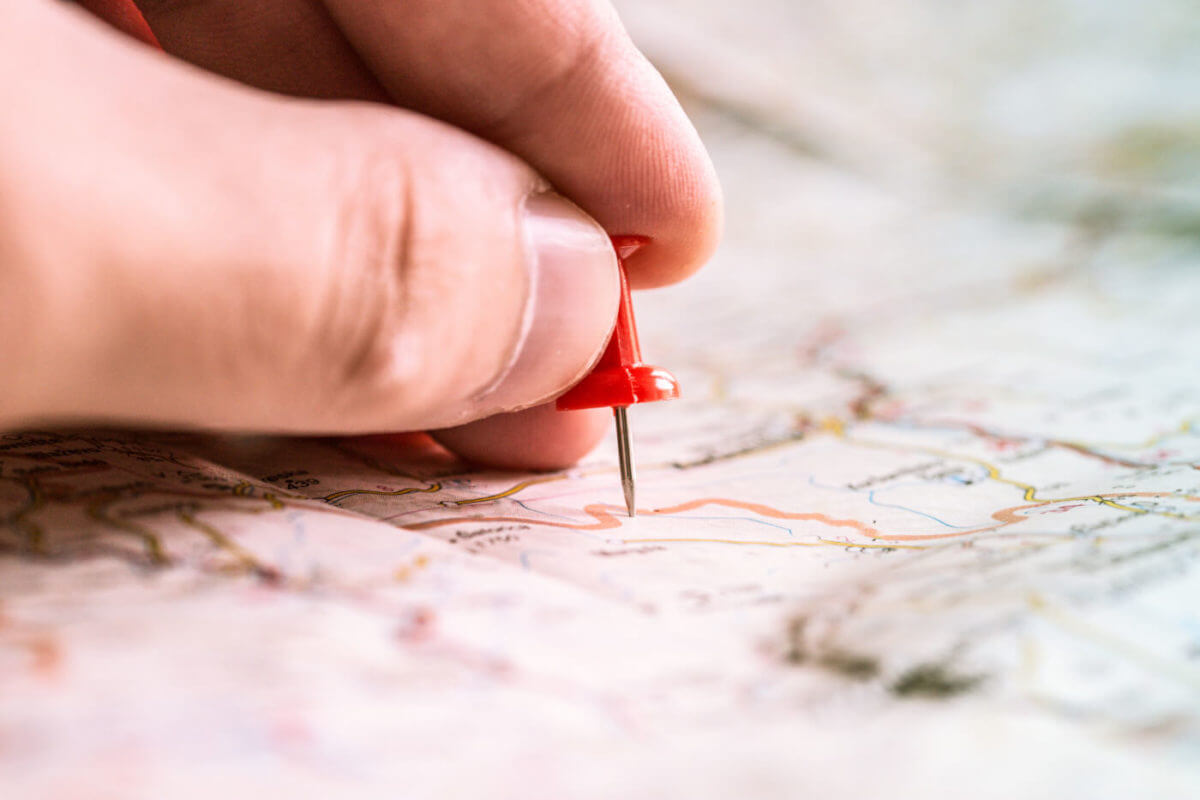You can place your baby for adoption wherever you’d like — with a family in your state or somewhere else in the U.S.
If you’re just starting to consider adoption, you probably want to know more about how this works. Many women ask questions like:
- What is an interstate adoption?
- Can people from another state adopt my baby?
- What do I do if I want to give my child up for adoption someplace out of state?
As a woman considering adoption for your baby, your biggest concern is finding the right adoptive family. The majority of women do so through interstate adoption.
An Interstate adoption is when the adoptive parents live in a different state than the birth mother. Because the goal of adoption is to find the best adoptive family for your baby, hopeful adoptive families have the ability to adopt your baby, just like you have the ability to place your child out of state.
This guide explains the seven steps to placing your baby for adoption out of state. The process itself is very similar to placing your baby for adoption with a family that lives in the same state as you, with a few minor differences. Anytime you have questions about the adoption process, finding the best family, or anything related, fill out this form to get more information from an adoption specialist.
Until then, continue reading this guide to learn how to place your child with an adoptive family from a different state.
How to Place Your Child for Out of State Adoption
When researching the adoption process, it can quickly feel overwhelming and confusing. To help ease your mind, adoption professionals are here to guide you every step of the way towards a successful adoption. These specialists will be well versed in out-of-state adoption and be by your side every step of the way throughout this life-changing decision.
The number of options of adoptive parents to choose from will depend upon the agency you work with.
When you pick a national adoption agency, you are given opportunities to connect with hopeful adoptive families all around the United States. When you’re looking for the perfect family for your baby, distance shouldn’t be a factor in your search. Interstate adoption may increase your chances of finding the perfect family that meets all of your expectations and desires.
Overall, the interstate adoption process is very similar when you compare it to placing your child with a family that lives in your state. Here are the steps you’ll need to take when giving a child up for adoption while the birth and adoptive parents are in two different states.
Step 1. Determine Adoption is Right for You
It may sound obvious, but before you can begin the adoption process, you need to determine if it is the best choice for you and your baby. Adoption can be a very challenging and emotional experience, but it can also be a life-changing and amazing opportunity for your child, the adoptive family, and yourself.
You want to make sure you are ready for the ups and downs and understand the permanence associated with out-of-state adoption. You can always talk to adoption professionals before making any decisions. Click here to be connected with a helpful professional today.
Step 2. Create Your Adoption Plan
Once you have determined this is the best path for your baby and you, you will begin working with an adoption specialist to create your adoption plan. This plan is essentially a guideline for how you want every step along the way to go. You control all of the decisions and input, your adoption specialist helps ensure your needs are being met and goals are being reached.
This plan will cover everything from the type of family you hope to find, the type of adoption you prefer, to the hospital you will deliver your baby at. Each detail is discussed and decided to help avoid any misunderstandings and confusion.
Step 3. Finding the Adoptive Family
The first step, of course, is to find the adoptive parents. Many prospective birth mothers end up working with families that live in another state. In fact, interstate adoption is the most common type of adoption in the United States. When you craft your adoption plan, you’ll fill out a form that will list your preferences in an adoptive family. You’ll be able to decide on things like:
- Age range
- Occupation
- Religion
- And more!
Whatever you decide, your adoption specialist will work with you to make it happen. Even though you’ll be looking for adoptive families from another state, you’ll still have the same opportunities as every birth mother, whether it is an interstate adoption or local.
If there’s a family you really like, your adoption specialist will help everyone get to know each other better through pre-placement phone calls, emails, or even visits.
Step 4. Get to Know the Adoptive Family
After you’ve successfully found a family for your out-of-state adoption, it’s time to start getting to know them. Even when giving a child up for adoption while the parents are in to two different states, you will have plenty of opportunities to get to know each other through phone calls, email, text messages and whatever forms of communication you’re comfortable with.
Your adoption specialist will usually be the one to mediate the first phone call between you and the adoptive family. After that, the type and amount of contact you choose to have will be up to you. If you’d like, many adoptive families are will to travel the extra mile to meet you in person. If you’re sure that this is the adoptive family for you, this is a great opportunity to bond with them before your baby is born.
Step 5. Your Hospital Stay
Once the adoptive family knows the baby’s on the way — it’s time for them to travel to you! The adoptive family will be ready to depart at a moment’s notice to meet the newest member of their family. Your adoption specialist will be able to let the adoptive family know ahead of time exactly how you want your hospital stay to go, so they’ll be prepared when the big day comes.
Even when you are placing your baby with parents from another state, you will be able to give birth in a hospital that’s close to home and convenient for you; the adoptive family will be the one doing all the traveling, so you can focus on having a safe and healthy delivery experience.
Step 6. Complete All Adoption Legal Requirements
One of the biggest differences when you choose and interstate adoption is the legal requirements that an adoptive family must meet. While you won’t have to worry about any additional legal requirements in your adoption process, the adoptive parents will need to follow all of the Interstate Compact Placement of Children rules and regulations.
This step must be completed before they will be able to leave your state with the newest member of their family. This process will make sure that the laws of both states have all been met before the adoption can be finalized.
This process usually takes about a week or two to get through. While the adoptive family is waiting for the okay to head home, you can spend more time getting to know one another.
Step 7. Post-Placement Contact
If you choose to have ongoing contact with your child through an open adoption, you will still see plenty of the adoptive family, no matter how far apart you live. You can connect with one another through emails, phone calls, and even visits. Your adoption specialist and adoption attorney will be more than happy to assist with any post-placement contact questions.
Contact an Adoption Specialist
This was a brief rundown of the out-of-state adoption process. Although every adoption situation is unique, this is a guideline for all adoptions. If you’re wondering, “Can you put a child up for adoption in a different state?” The answer is always yes, and adoption specialists are here to help.
For More information or to begin your search for the best adoptive family, contact an adoption specialist today.



![Are Newborns Placed for Adoption Always Adopted? [4 Common Questions about Adopted Babies] Are Newborns Placed for Adoption Always Adopted? [4 Common Questions about Adopted Babies]](https://adoption-for-my-baby.com/wp-content/uploads/2018/10/Are-Babies-Given-Up-for-Adoption-Always-Adopted-300x200.jpg)



![Finding the Best Adoptive Family [Everything You can Choose About Adoptive Parents] Finding the Best Adoptive Family [Everything You can Choose About Adoptive Parents]](https://adoption-for-my-baby.com/wp-content/uploads/2020/10/What-Can-I-Choose-About-AF-2-300x200.jpg)






![Does it Cost Money to Put a Child up for Adoption? [5 Questions you Might Have] Does it Cost Money to Put a Child up for Adoption? [5 Questions you Might Have]](https://adoption-for-my-baby.com/wp-content/uploads/2022/03/cost-300x200.jpg)